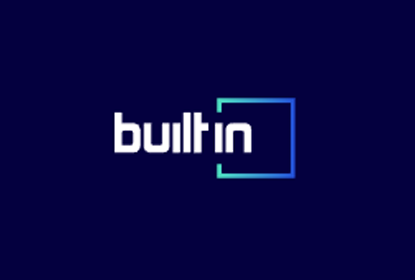Last month, I wrote about my product playbook, a guide I put together because I was answering so many questions for startup founders suffering from stagnant growth and lifeless products.
4 KEY BENEFITS THAT LEAD TO PRODUCT MARKET FIT
- Top line: Makes money
- Bottom line: Saves money
- Aspirational: Improves standing
- Psychological: Improves well-being
In that post, I started at the very top, with the startup’s vision. In this post, I’m going to jump ahead in the playbook to the most critical part of the product development process.
Once vision, mission and position are settled, and once a target market is defined, the most important choices are those that concern what features to build into the product itself.
This is product-market fit. It’s a target. And aiming at it should never be guesswork.
What Is Product-Market Fit, Really?
I’m going to do a quick high-level overview of product-market fit so we’re all on the same page when I use what is essentially a buzz-term.
Product-market fit is a relatively new term, usually credited to a couple of Silicon Valley venture capitalist investors, with ultra-famous VC Marc Andreesen popularizing it when he said that achieving product market fit meant this: “Being in a good market with a product that can satisfy that market.” In other words, you get PM fit when a lot of people buy what you’re selling.
Product market fit is not a science to be decoded. It’s just a term. So let’s break down Andressen’s definition. Once you define your target market, you’ve identified a market that is hopefully a good market, per that definition of product market fit. So now we need to decide whether or not your product can satisfy that market.
Well, that satisfaction is going to come from solving that market’s problems. You need to identify, expose and promote the value of your solution to those problems to your target market.
So in real terms, you need to build a product that is the embodiment of a solution that solves your target market’s problems.
Business needs are the problems. Key benefits are the solutions. You define those two things, then you prioritize everything the company does — not just builds, but does — to solve the problems.
Business Needs
Defining business needs can be done, generally, three ways.
ASK YOUR CUSTOMERS DIRECTLY
This can be done one-on-one or with surveys. The former takes a ton of time but can be more open ended and thus more insightful, the latter can reach a larger number of respondents more quickly, but is almost always just scoring the accuracy of predetermined hypotheses.
But more damning than that is that too often, customers don’t know exactly what their problems are. They just know how those problems manifest themselves. There’s a huge difference between relieving symptoms and offering a cure.
Customers are also pretty bad at ranking their own pain points.
MEASURE YOUR CUSTOMER’S BEHAVIOR
One reason I’m a huge fan of demos, prototypes and MVPs is that you can quickly start collecting data on how your customers grasp their own problems and how they gravitate toward a proposed solution. In other words, what they do, not just what they say.
But this is hard to pull off, because it requires you to have your customers, or at least a statistically significant subset of them, already on board.
Market research is probably the next best thing to measuring customer behavior, provided that research is always done with a grain of salt. Because like asking your customers what they need, you’re mired in the world as it is today, before your product exists. This is the old Henry Ford predicament, “If I had asked my customers what they wanted, they would have said ‘faster horses.’”
Market research suffers from the same flaw. Existing solutions will be cheaper and simpler or more complex and expensive. But none of them are exactly yours. So — and don’t tell anyone I told you this — but you really have to…
PAY ATTENTION TO YOUR GUT
You didn’t start your innovative company to be a carbon copy of the existing solution. Your vision and mission play a large part in what you develop as a solution, to restate what I said on those topics, all the way down to the feature set.
It’s my belief your best chance at uncovering the right business needs is to employ a combination of all three methods.
Your business needs will eventually drive the functional specifications of the feature set of the product you’re setting out to build. But first, they serve to dictate the solutions to the problems. And to do this, you break down the solutions into…
Key Benefits
In some simple sense, you can get to a roadmap just by lining up key benefits with features and business priorities and slap those things into a quarter-by-quarter Gantt chart. It won’t be super useful, but at least you’ll have a plan.
Defining key benefits is step one of getting to the product roadmap. And not just any roadmap, but the right roadmap, the one that gives your product its best chance for success.
So in its simplest sense, your customer does X. Their problem is that over time, doing X is too expensive. Your solution is Y, which does 80 percent of what X does, but is 50 percent less expensive. Furthermore, your gut and your market research tells you that the other 20 percent that Y does not do is just bloat and almost your entire market could live without that 20 percent.
In this very simple example, which I am not endorsing as enough to start a company around, those are your key benefits:
- Fifty percent less expensive.
- Accomplishes 80 percent of the task (and probably in less time).
- Is the new way of doing X that eliminates a lot of bloat.
Those benefits can be categorized:
- They cut costs.
- They simplify.
- They reduce stress and can be sold as aspirational (the new way of doing things).
Now, to prioritize those benefits, I’ve come up with a matrix of where most general key benefits fit into major categories, and here they are, listed by general priority:
Top line. The customer can generate revenue/money directly, gain knowledge that leads to more sales/money indirectly, add function/value that leads to higher customer lifetime value (LTV) and/or smaller customer acquisition costs (CAC), mainly for B2B, and open/enter a new market or niche, mainly for B2B.
Bottom line. The customer can: Cut costs directly. Eliminate resources such as people, services, third-party products, etc. Save time taken by education, training, mistakes and increase efficiency. Simplify and increase productivity.
Note: If any of these savings contribute directly to a customer’s margins, they can become a top line benefit.
Aspirational. The customer improves their social standing, psychological well-being, brand awareness, mainly for B2B, and marketability, either personal or professional.
Psychological. The product can reduce stress, reduce complexity, increase control, increase comfort, and e used without impact to loyalty. In other words, the customer does not have to give anything up to realize the benefit.
Don’t sleep on any of these, but do prioritize the ones at the top, where money is involved.
Mapping Priorities
Now we’re talking about the roadmap and actual hands-on objective labor. Fire up a Gantt chart, because we’re going to start throwing stuff at it.
A product roadmap is as much a strategic document as it is a tactical guide. Yes, it’s about execution, but it’s not just about the execution of building the product, it’s the execution of building the right product that solves the problems of ideal customers in a target market that can scale to meet the vision and mission of the company.
Lots of strategic decisions to be made there.
So I like to start by listing out the priorities associated with all of that. Those priorities could and should include feature sets or big complex features, strategic and sales initiatives, organizational shifts, market expansion, even acquiring and serving large, strategically important customers.
Once we know the big stuff, and how long it will take and how long we want to spend on getting to specific milestones, we can break those priorities down into the features, initiatives, epics and tasks that comprise the path to those milestones.
This is the product we will build that best fits the market we will serve.




